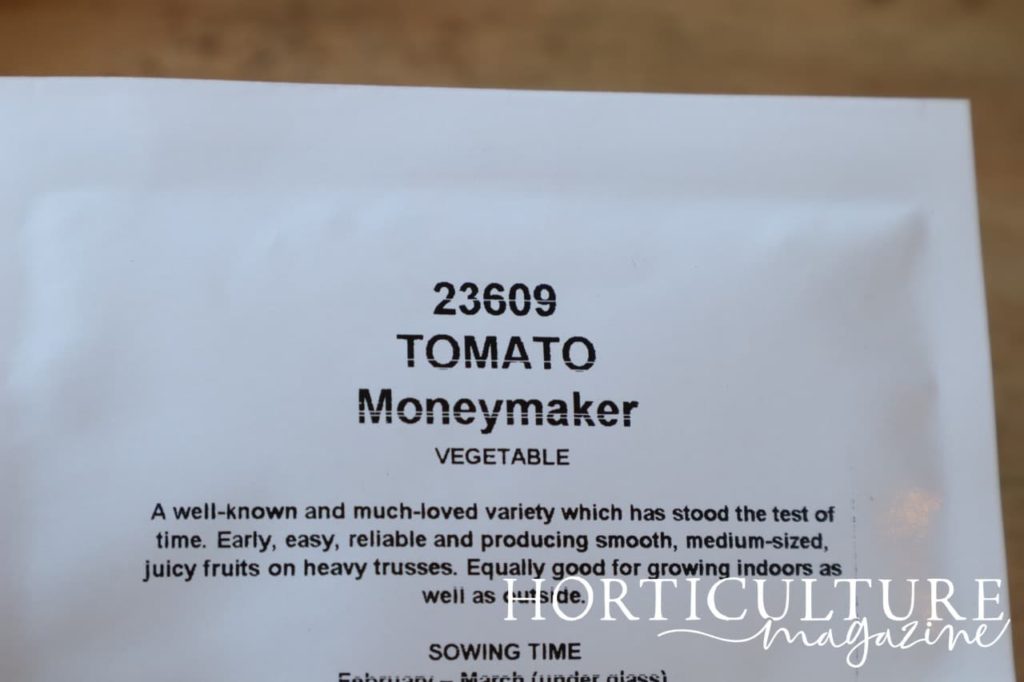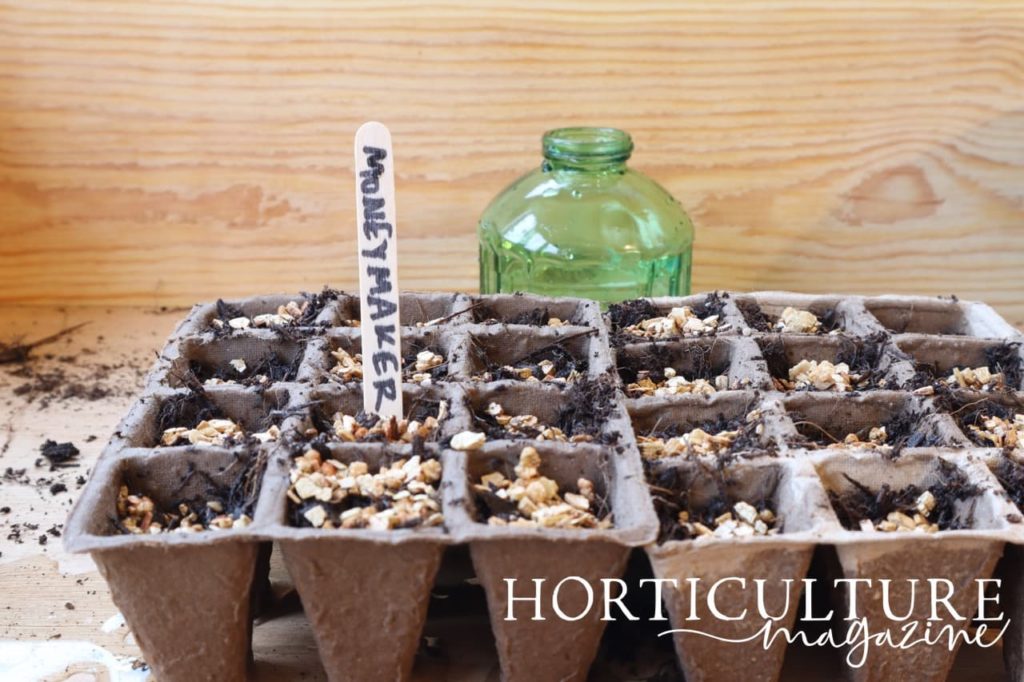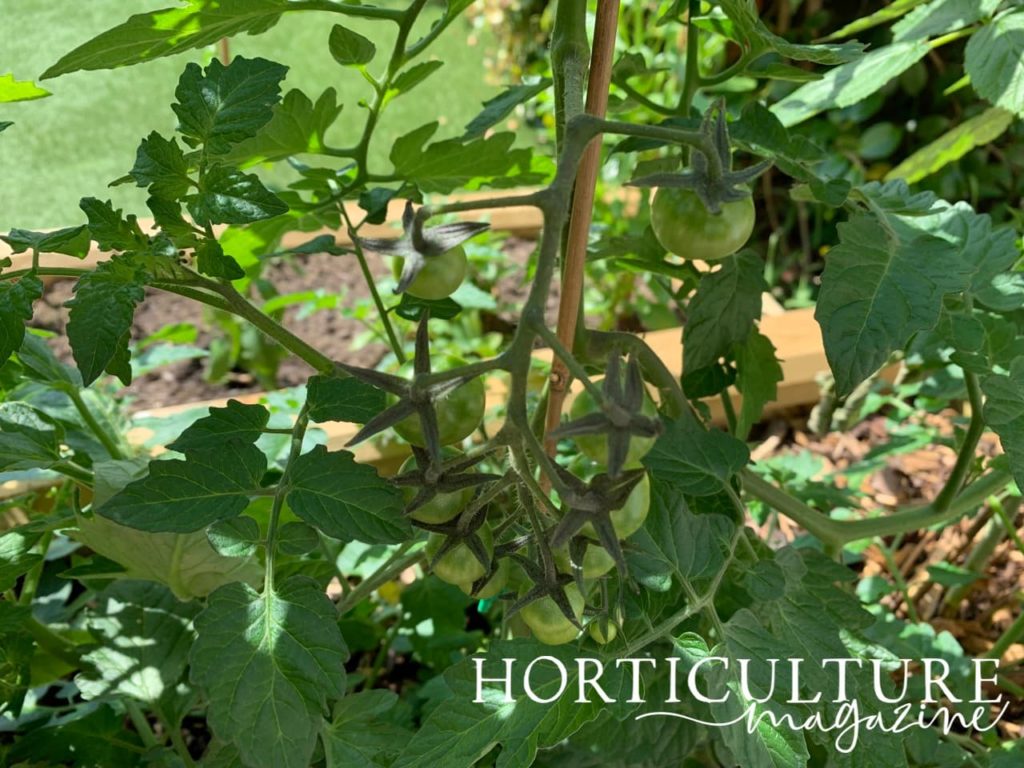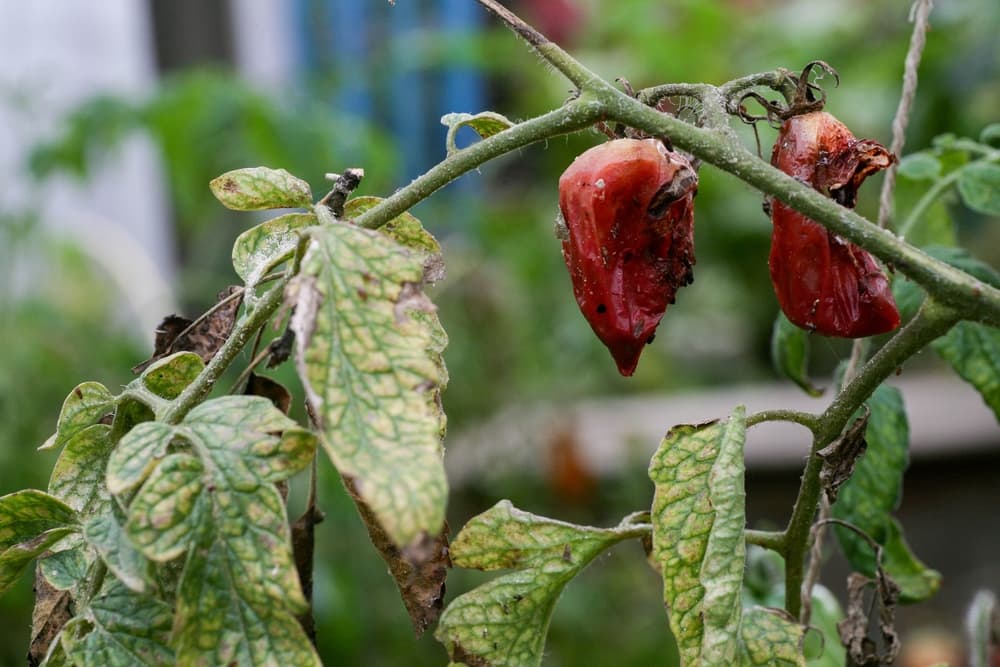You Can’t Go Far Wrong With Moneymaker Tomatoes – How To Grow And Care For Them

Chris is a gardening writer and nature enthusiast. He graduated from Oxford Brookes University in 2022 with an MA in Psychology. Chris works with the Leeds Green Action Society, helping their food cooperative by growing various fruit and vegetables on their two allotments in Hyde Park, Leeds.
Reviewed By PETER LICKORISH

Peter is a Horticulture Lecturer and self-employed Horticulturist, with a passion for diverse areas of the industry - from garden design to the science behind plant growth and propagation. He has completed the Royal Horticultural Society’s Master of Horticulture (MHort) Award and lectures on RHS courses at Bedford College.
IN THIS GUIDE
TOMATO GUIDES
Disposal
Feeding
Growing From Seed
Growing In Hanging Baskets
Harvesting
Problems
– Not Setting Fruit
Pruning
Yellow / Orange Varieties
– Roma
– Sungold
– Alicante
– Moneymaker
– Gardeners Delight
‘Moneymaker’ are a popular type of bright, juicy tomato grown in many areas of the UK.
This variety is a popular one to grow, although this is more thanks to its reliability and ease of growing than its taste which, while good, arguably doesn’t compete with some other tomato varieties.

If you’re looking for an easy-to-grow tomato, however, you can’t go far wrong with ‘Moneymaker’.
You’ll enjoy a hassle-free growing experience, and typically a more bountiful harvest than you might otherwise expect.
Overview
| Botanical Name | Solanum lycopersicum ‘Moneymaker’ |
| Common Name(s) | Moneymaker Tomatoes |
| Plant Type | Fruit |
| Native Area | Cultivated |
| Hardiness Rating | H1C |
| Foliage | Tomato vines |
| Flowers | Yellow |
| When To Sow (Indoors) | January, February, March, April, May |
| Plant Out | June |
| Flowering Months | June to September |
Sunlight
Preferred
Full Sun
Exposure
Sheltered
Size
Height
Up to 1.5M
Spread
Typically cordoned
Bloom Time
June – September
Soil
Preferred
Fertile loam is ideal
Moisture
Moist but well drained
pH
Neutral / Mildly Acidic
Moneymakers are cordon-type tomatoes, meaning they require pruning to encourage optimum growth.
It’s an annual, meaning the plant will die in winter and require new sowing for next year, but it’s quick and easy to grow from readily-available seeds, so this shouldn’t present too much of a setback.
If you’re looking for oval-shaped tomatoes, or ones in exciting colours like green, yellow, orange, and purple, you’ll need to look elsewhere.
How To Grow Moneymaker Tomatoes
I grew Moneymaker tomatoes earlier this year – initially by propagating from seed in February using a heated propagator, then by planting out in May into the raised beds in my back garden.

I found them to be generally quite easy to grow from seed – including being low maintenance and high-yielding.
See some of my results (including some images of my ripened tomatoes) below:
Growing From Seed
For best results, you’ll want to sow your ‘Moneymaker’ seeds indoors and harden off the young plants before planting them out.
You can plant seeds outdoors, but it’s not optimal. I definitely found that the 2-3 month extension in growing time (through indoors propagation) resulted in much greater growth and a higher yield than I would have expected growing outdoors.

In late February or early March, sow your ‘Moneymaker’ seeds in pots. Then, in mid-April, pot up the young plants and continue to grow indoors.
Seedlings are ready for potting up when there are two pairs of leaves.
Harden them off in early May, before planting outdoors in mid-May.

This should ensure your plants are strong enough to hold their own against the elements, and minimises any risk of frost exposure.
In the year just gone I waited a little later to plant out (until the end of May) and ultimately felt that I should have taken the plunge sooner.
For sowing, use free-draining seed-sowing soil, with a thin layer of compost on top.
When growing from seed you should see sprouts within one to two weeks.
Where To Grow
This variety of tomato will do best in a spot that gets a lot of sunlight, ideally six hours or more per day, with well-drained soil.
Although the seeds are small, factor in a full-sized tomato plant when spacing them out.
This means leaving about a 90cm gap between plants in each direction.
You can also grow Moneymaker tomatoes in a greenhouse.
If you’re doing this, you can plant out a little earlier – around early April – because the greenhouse will protect against the cooler outdoor conditions.
Plant Care
Support
Moneymakers grow to be quite large, so supporting them with a stake is a good way to encourage strong growth.
Simply push a stake around 180cm high into the ground, with 25-30cm below the soil – place this about 30cm behind each plant.
As the young plant grows, use string to gently tie the stem onto the stake.
Avoid tight knots as they can suffocate the plant and restrict ongoing growth.

Feeding
To provide nourishment to your fledgling tomatoes and help the soil to retain moisture, apply 3-5cm of mulch around the plants.
You should also apply some high Potassium fertiliser fortnightly once fruits begin to appear.

This ensures optimal nutrition and plump, juicy fruits – leave about 15cm clear in all directions from the plant stem when fertilising, to avoid stifling growth.
Watering
Water your seedlings as soon as you’ve planted them, so that ~15cm of topsoil is moist.

Water a couple of times a week when the top 3cm of soil feels dry.
Tomatoes are fairly thirsty, and will require weekly watering throughout the growing season.
Pruning
Another way to encourage an optimal amount of fruit from your tomato plant is to cut off any shoots that start growing between the main stem and the smaller leaf stems.
Also remove any vertical growth beyond 6 or 7 fruit-bearing trusses.
Although it may seem counterintuitive to deliberately curtail growth, you’ll be helping the plant to allocate its resources and energy to developing the healthiest and tastiest fruits on its main stems.
Harvesting Moneymakers
Your plant should be ready to harvest between July and September, depending on when you planted it out and the exact conditions where you live.
You’ll be able to tell when they’re ready: the fruits will be big, juicy, and tempting.
Here are the ones I grew when they were finally ready to harvest:

Harvesting is simply a case of picking the tomatoes and storing them indoors.
Regular harvesting increases the likelihood of further fruiting during a season, too.
Common Problems
There are a few pests who are keen to get at tomatoes.
Aphids
The little sap-suckers love to feed on plants of all shapes and sizes, with a particular proclivity to choose the ones we value most.
It’s not unusual to see aphids feasting on Moneymaker tomatoes, and the first step is vigilance.
If you notice the green visitors, try first to remove them by hand and discourage further visits.
If this doesn’t work, you can try to introduce predator bugs like ladybirds.
Blight
Moneymakers are a common victim of blight, which makes itself known through brown spots and rings on the plant’s leaves.
“Tomato blight can be tragic: watching plants rapidly succumb to dark blotching and knowing there’s no further action possible other than the destruction of the plant,” shares Master Horticulturist Peter Lickorish.

Once infected, the only viable course of action to prevent further damage is to destroy the plant.
This will stop blight spreading to surrounding plants and, while losing an entire plant is upsetting, it’s preferable to losing all of them.
“I have found that growing plants in a rain shadow, against a sunny wall where rain rarely lands directly on the leaves, helps enormously,” adds Peter.
“It does increase the watering work, but it gives you control over moisture. This, in turn, helps prevent fruit splitting and blossom end rot, which are products of erratic rainfall.”
These fruits are tasty, easy to grow, and capable of producing multiple sets of fruit each season – what more could you ask for!
You should now be ready to order some seeds, grab a few stakes, and get your tomato harvest started. Happy harvesting!
